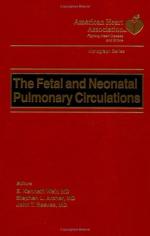|
This section contains 904 words (approx. 4 pages at 300 words per page) |

|
The primitive gut tube forms during week four of gestation. It derives from the incorporation of the dorsal part of the definitive yolk sac into the embryo due to embryonic folding. The primitive gut is divided into the foregut, midgut, and hindgut.
The esophagus, stomach, liver, gallbladder and bile duct, pancreas, and upper duodenum derive from the foregut. All of these structures receive their blood supply from the celiac trunk (except for some portions of the esophagus, which are supplied by other branches of the aorta).
The first step in the development of the esophagus is the formation of the laryngotracheal diverticulum in the ventral wall of the primitive foregut during week four. The distal end of the laryngotracheal diverticulum enlarges to form the lung bud. It is initially in open communication with the foregut, but eventually they become separated by folds of mesoderm...
|
This section contains 904 words (approx. 4 pages at 300 words per page) |

|


